Prelude:
One of my favorite things to do when I was a little girl was read this book of fairy tale collections my dad had bought me. It was a book with a tale for each day of the year. No matter how many times I’ve finished and run through the book--whether religiously keeping up with the fairy tale of the day, or reading with total abandon finishing an entire month’s worth of stories in one night--I would always go back to it and re-read it. Being sickly and socially awkward, I didn’t have the patience for any other more ‘active’ play then, so reading became my most favorite thing to do. That fairy tale book survived a lot of relocation and house transfers. I still have it on my shelves. It contained most of my favorite stories from the Brothers Grimm and Hans Christian Andersen, made alive only by the overactive imagination of 8-year old me. I casually browse through every once in a while when I miss my dad.
Earlier this year, I first stepped into Europe when we arrived in
Paris. It was a surreal experience, hopping off the plane with a bag full of expectations. Paris was an urban artsy jungle: bigger, badder, and more flamboyant than I originally anticipated. Frenzied but a happy mess. However, nothing had prepared me for what followed when we visited northeast of France.
Strasbourg is the capital of the Alsace Region. It straddles the border of France and Germany, which makes it an interesting blend of French and German influence. When we stepped out of the Gare de Strasbourg after a 2-hour train ride from Paris, what immediately hit me was the cold. The temperature during our visit was 4°C. I tightened the scarf around my neck and buttoned up my coat. The day had just begun and I could already hear my limbs creaking and stiffening from the cold.
 |
| Strasbourg, France |
As we walked from the station to the Centre-République, I can already see the traces of German influence from the surroundings. Although, it was still predominantly Gallic with its old French elegance--mansard roofs, jutting dormer windows and faux-balconies. But as we drew nearer to Ponts-Couverts, everything gradually turned rustic. The cream colored buildings were replaced by ones with richer reddish-brown walls and roofs with bellcast eaves, white and delicate exterior window shutters were replaced with ones in timber. Romanesque in style, characteristics of 17th-century Germany. Houses that reminded me of The Elves and the Shoemaker, and towers that, oddly enough, reminded me of Rumpelstiltskin.
 |
| Le Stift, A Protestant Seminary in Strasbourg |
 |
| Église Catholique Saint-Pierre-le-Vieux |
 |
| Ponts Couverts |
As we entered the Old Town, the wintry brown Grand Ill welcomed us, calm and flowing. The streets were lined with shops and cafes, most of which I was not entirely sure if open, partly because I was not used to seeing open cafes and restaurants lacking outdoor customers. Given the cold, however, I would understand if most customers had inclined to spend the day indoors with coffee or a few bottles of beer.
It was late January and so the trees were bare, the skies were overcast, and the streets weren’t crowded. We took our time walking the streets of Strasbourg. The neighborhood wasn’t in a rush and neither were we. The hazy light peeking out from the clouds haloed the place with a “grim” vibe, adding more purity to the ambiance, of which I can attest is amazing in this part of France. It accentuated its medieval soul.
The houses around the area progressed from French elegance to medieval timber-framed German style, which provided a unique landscape. It feels like I am in the middle of a fairy tale. Add the Black Forest in the picture (which is close to where we were) and it would be straight out of Little Red Riding Hood. Despite the cold weather, the timber houses looked unbelievably warm and cozy. Some houses and restaurants were still decorated with reds and golds making the place feel as if it’s Christmas all year-round.
 |
| Le Bistrot des Copains, viewed along Place Saint-Louis |
Cars were rare and most people were strolling around on foot or on bikes, in stark pleasant contrast to Paris’ hectic and frayed urban-ness. We passed by street markets and flea markets where they sell a variety of commodities from bread, cheese, flowers, meats, sweets, bags, and clothing. An abundance of souvenir shops abound with postcards, figurines, and pins occupy the quays and boulevards. A biscuit shop where huge stacks and boxes of bread, cookies, and sweets dominate the room bathing it in the smell of vanilla heaven. Artisan stores, confectionery shops, and bookstores endlessly entertained us. One would never run out of things to check out.
 |
| Street market along Place du Vieux Marché aux Poissons |
 |
| Street market along Place du Vieux Marché aux Poissons |
 |
| Street market along Place du Vieux Marché aux Poissons |
 |
| Half-timber framed structures at Place de la Grande Boucherie |
 |
| Palais Rohan |
When we reached the center, lo and behold, I was greeted with the most beautiful church I have seen in our visit. The Cathédrale Notre Dame de Strasbourg stands over 460 feet tall, poised and regal, aflush and majestic watching over Strasbourg. The cold weather rendered the stone facade of the church a deeper rosy hue. This Gothic-Romanesque structure looks every inch a work of God. It rests at the end of Rue Mercière astounding tourists from every direction. We approached the structure slowly from Place du Chateau, awestruck as the entire length of the church unfurled before us, with her sweeping flying buttresses and mesmerizing stonework. The structure literally took my breath away. I was shivering from the cold and astonishment. The facade is a feast for the eyes. A towering spire, remarkable sculptures, portals with intricate details, myriad pointed arches, and an impressive rose window. Go ahead, click the picture to see it bigger. Feel free to zoom in on the details ;)
 |
| Cathédrale Notre Dame de Strasbourg |
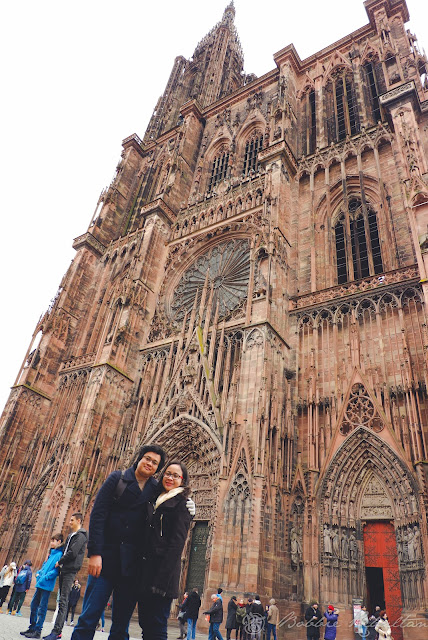 |
| Borgy and I in front of Cathédrale Notre Dame de Strasbourg |
 |
| Cathédrale Notre Dame de Strasbourg |
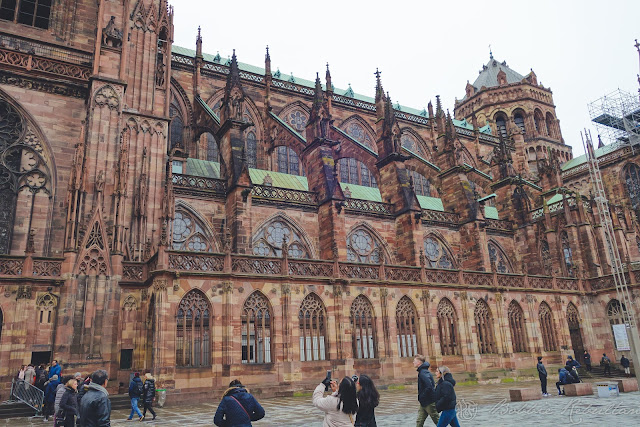 |
| Cathédrale Notre Dame de Strasbourg viewed from Place du Chateau |
As you can probably see from the pictures above, we had a hard time fitting the entire facade of the church into the photo. The church is a towering giant, and we had to bend, crouch, and twist our bodies into weird angles trying to capture her entire form into one photo.
 |
| Cathédrale Notre Dame de Strasbourg, looking east |
At the south transept, rests a life-sized clock hemmed in with scaffolding--the Strasbourg Astronomical Clock featuring an automata, a planetary dial, a
perpetual calendar (which is considered to be
astoundingly accurate) and an animation of small figurines of Christ, man, and Death. This is considered one of the largest, and one of the most complex clocks in the world. The clock is a work of different watchmakers, mechanics, and mathematicians over different centuries.
This current clock is perfected by Jean-Baptiste Schwilgué. It was being repaired when we visited, hence the scaffolding, so we could not see the clock in its full unobstructed glory, but thankfully, the clock still worked during our visit. A short presentation regaling its history and one-of-a-kind features is played at different hours of the day. Luckily, we were able to watch it on schedule. After the perfectly timed presentation, the procession of small figures launched into movement and told the story of the different stages of life as the figure of Death watched in the background, while we, the audience, gaped at its ingenuity. It is honestly more than just a really accurate clock and calendar, it’s a mathematical, technical and scientific marvel. I could not help but look at it open-mouthed and in wonder of the limitless capabilities God has given man in order to create a masterpiece.
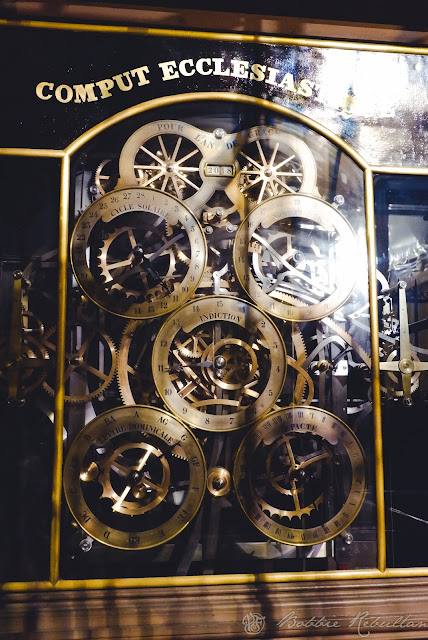 |
| Strasbourg Astronomical Clock, Computus |
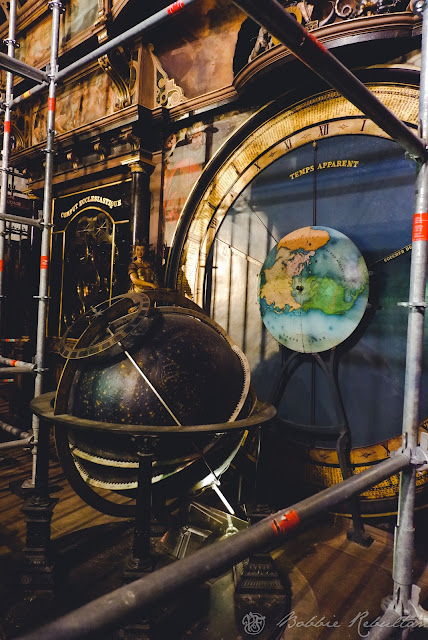 |
| Strasbourg Astronomical Clock, 24-hour dial |
If asked what I remember most about my trip to France this 2018, I would immediately answer Strasbourg. Never mind the intense temperature that caught me unprepared; this city is gorgeous and its elegance--unassuming. The rustic and medieval ambiance made me feel like I’m in an entirely different era. The hues and tones of Strasbourg imparts a dark but cozy atmosphere straight out of a Brothers Grimm fairy tale. It was like living my own dark tale. Looking up at looming timber-framed houses, warm light pouring from inside. It felt relaxing and foreboding at the same time; a feeling that was strangely hypnotizing.
 |
| Cathédrale Notre Dame de Strasbourg's west facade, viewed from Rue Mercière |
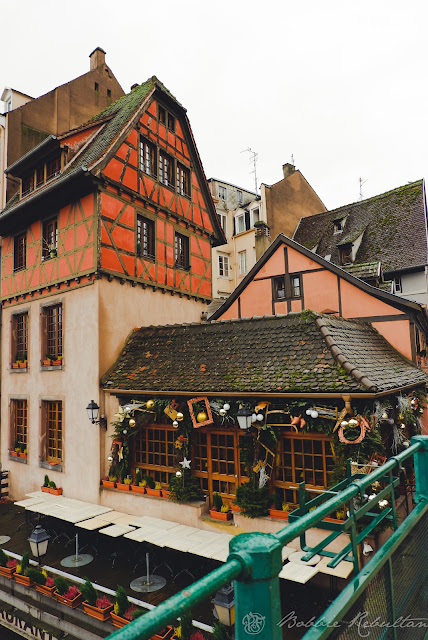 |
| Restaurant Marco Polo along Ponts Couverts still decked in holiday decor |
 |
| Restaurant Marco Polo along Ponts Couverts |
 |
| Place de la Cathédrale looking straight out of a Brothers Grimm Fairy Tale |
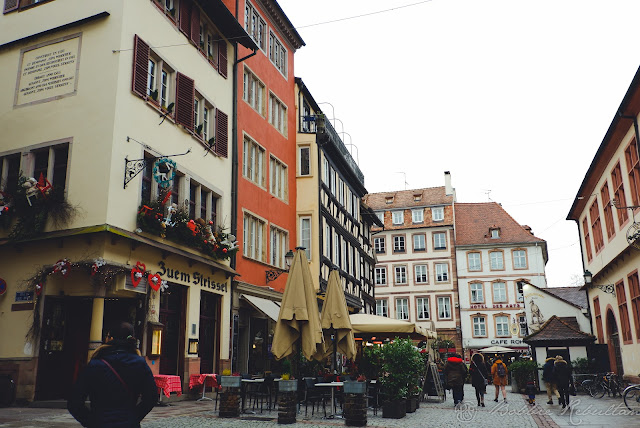 |
| Place de la Grande Boucherie |
In a span of few hours spent in the city, I have made indelible memories that would greatly influence how I would travel and how I would view the world from that point forward. A string of memories and little moments carefully curated formed a fairy tale on its own, bound between brick-colored leather:
The soft clink of the red tin box given to us for free when we bought biscuits and cookies at
La Cure Gourmande, which I now use to keep my travel trinkets and would forever remind me of German folklore and French circuses.
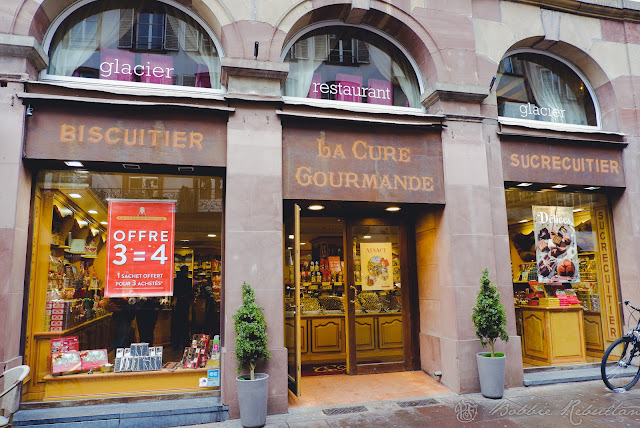 |
| La Cure Gourmande, Strasbourg |
 |
| Towering stacks of mouthwatering biscuits inside La Cure Gourmande |
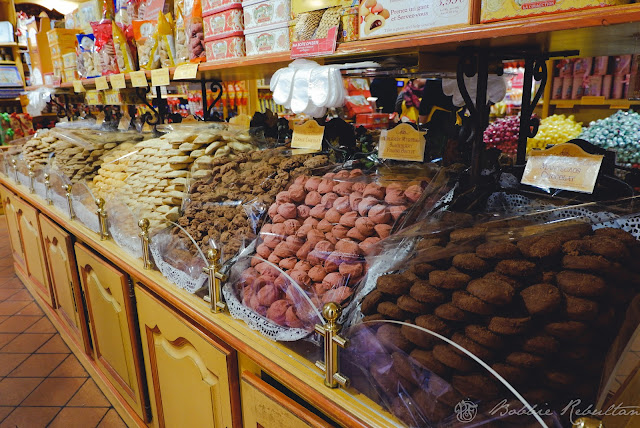 |
| Towering stacks of mouthwatering biscuits inside La Cure Gourmande |
The sour-bitter taste of apple chips I bought from La Nouvelle Douane, which Borgy and his family liked, but did not particularly tickle my fancy.
The smooth and rich taste of the vanilla flan we bought at a tiny street market at
Place du Vieux Marché aux Poissons. And the disappointment and regret we felt when we planned to hoard some to take back to Paris, only to come back to the plaza hours later and finding out that the street market had already gone. :(
 |
| La Ferme Saint Ulrich at a street market in Strasbourg |
 |
| Super happy with my flan. Hehe |
 |
La Ferme Saint Ulrich at a street market in Strasbourg
(This flan still lingers in my dreams. Huhuhu.) |
The futile attempt at warming myself up after spending hours exposed to Strasbourg’s unforgiving January weather by eating arrabiata at
Le Pescara.
 |
| Lunch at Le Pescara |
The astonishment I felt staring up at
La Maison Kammerzell, a High Gothic, medieval structure on
Place de la Cathedrale with timber panels and columns looking straight out of a Hallmark card. And wondering if it’s as warm inside as it looks from the outside.
 |
| La Maison Kammerzell |
 |
| La Maison Kammerzell |
The longing I felt when I came across this quaint library, and the hesitation I felt between tomes of books on display at a pop-up book sale at
Place Kléber because I didn’t have enough luggage space to bring back home. So instead, I’ve settled for a carefully chosen bookmark I would bring home to remember this old, picturesque, dreamy town.
I didn’t want to leave the place. My unaccustomed sun-soaked spirit agonized over the extreme temperature, but one thing I realized when we visited Strasbourg is that my soul is naturally drawn to old towns, where traces of history and culture linger in every corner, in hues of reds and blues. Maybe it comes with being a reader--my spirit seeks out solitude, where culture is more subtly felt and experienced. Or maybe it’s because it felt exceptionally nostalgic of my quiet and meek childhood; one that is heavily influenced with tales of wonder, witchcraft, and fantasy.
What Strasbourg did for me was more than giving me a glimpse of medieval Germany. It gave me back my childhood. My soul took flight and danced with the goblins and dwarfs, knights and elves of my childhood fantasies. A childhood where my love for literature dawned, and my writing dream had taken root.














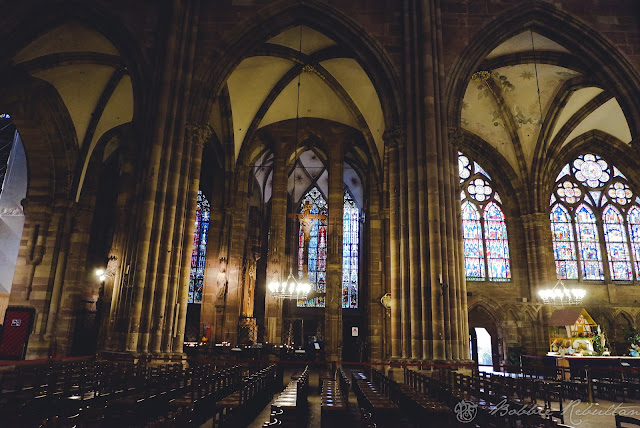
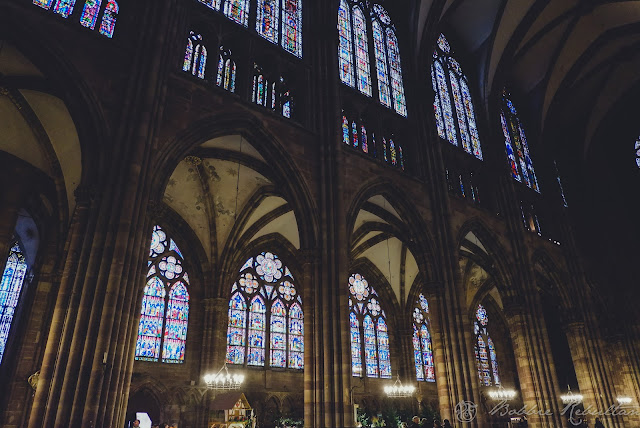
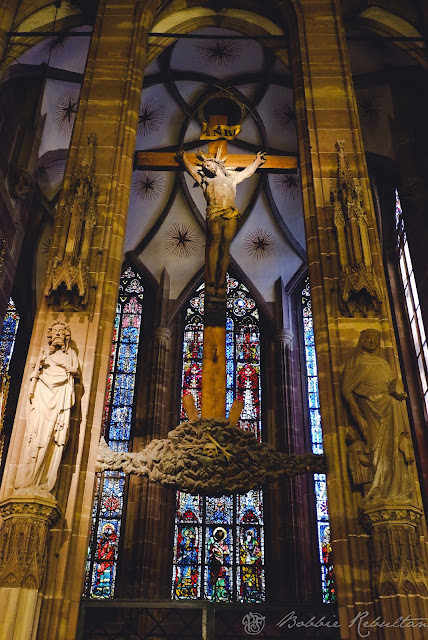
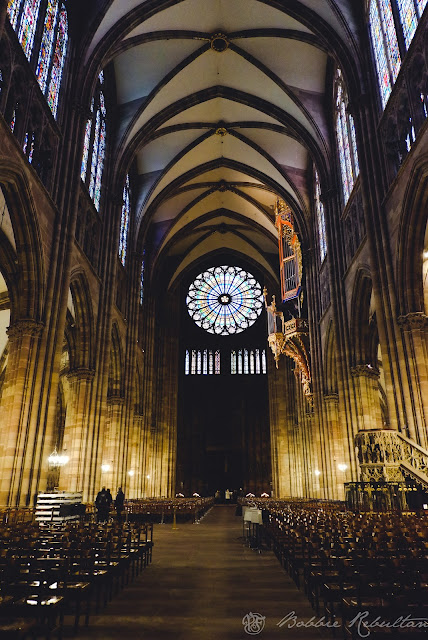
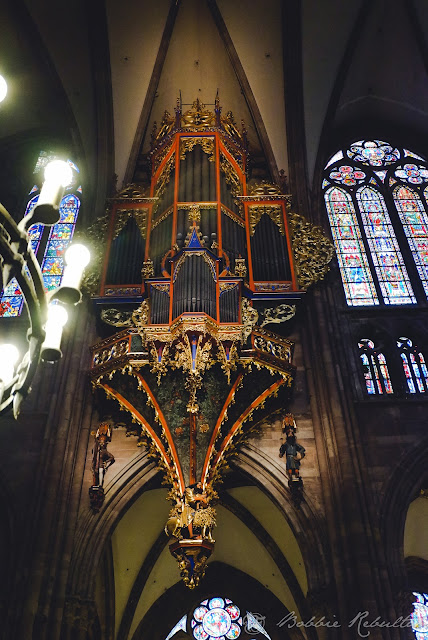



















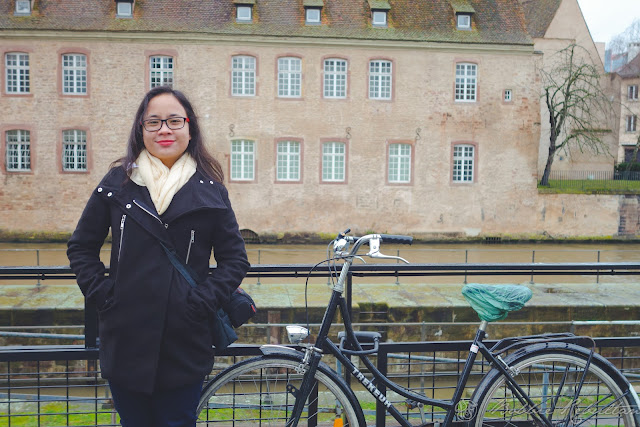


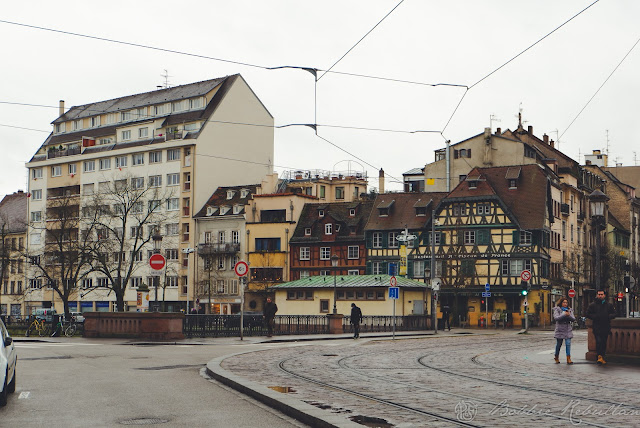

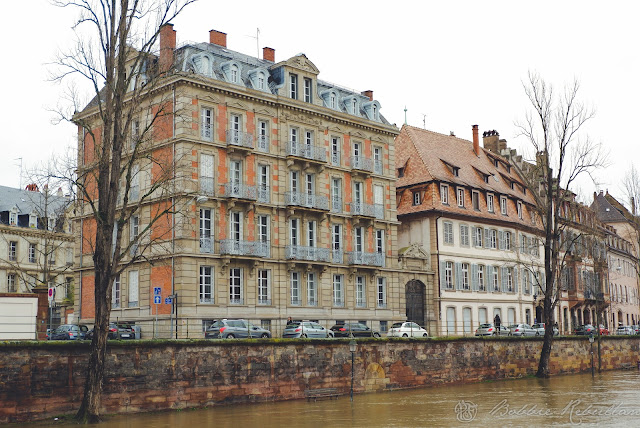

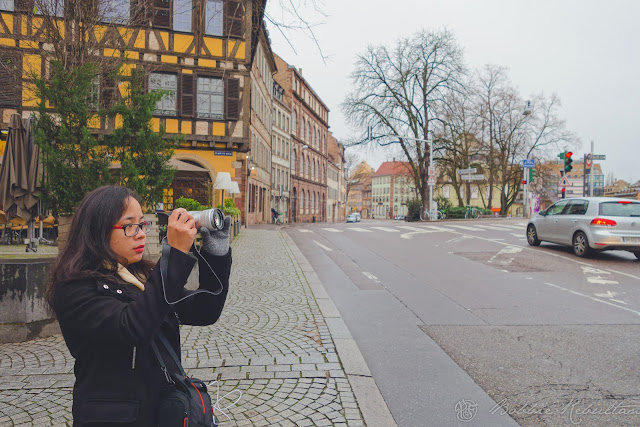

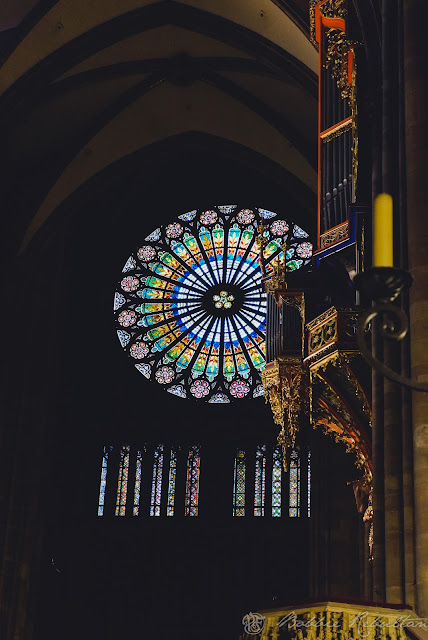

No comments:
Post a Comment